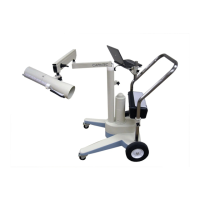CAPINTEC, INC. CAPTUS
®
3000
Wipe Test
The Wipe Test measures radioactive contamination for nuclear medicine departments and
laboratories, as mandated by state and federal radiation safety requirements.
Note: A Drilled Probe for the Collimator or an optional external Well Counter is required for
Wipe measurements.
Lab Tests
Urine Tests
Schilling Test
The Schilling Test utilizes Cobalt 57 labeled Vitamin 12 and is used to determine B-
12 deficiencies from either malabsorption, lack of intrinsic factor (pernicious anemia),
or intraintestinal destruction. The test entails collection of urine for 24 or 48 hours
after the oral administration of radioactive labeled vitamin B-12. The ratio of excreted
to administered Co57 is calculated. If the initial results indicate a reduced amount of
excreted vitamin, the test is repeated with a second sample of labeled B-12 and
intrinsic factor. For Schilling Test I, abnormal results are generally less than 8%-10%.
Normal range is generally 11% to 26%. For Schilling Test II, no change indicates
malabsorption, while an improved percentage indicates pernicious anemia.
Blood Tests
Blood Volume Tests
Blood Volume determinations involving radioactive tagging are most frequently used
in specific disease conditions when the hematocrit may not accurately estimate true
blood volume. Such conditions include extensive trauma or burn patients, certain
types of anemia, and polycythemia. Most frequently used radioactive tracers are
protein labeled I125 for plasma measurements and Cr51 tagged RBCs for red cell
mass determinations.
RBC Survival Test
RBC survival determination involving radioactive tagging is most frequently used in
diagnosis of hemolytic anemia. The CAPTUS
®
3000 software and default counting
parameters follow the testing protocol outlined in the Mallinckrodt RBC Survival
Instructions that utilize Sodium Chromate Cr51 Injections. The software standardizes
the 24-hour sample to 100% survival, and automatically decay corrects each
subsequent sample. This permits the user to measure each sample as soon as it is
collected. For this reason, all sample volumes must be the same. Each sample must
also have a hematocrit (HCT) measurement. The subsequent samples are corrected
for any differences in hematocrit.
July 14 FUNCTIONAL & TECHNICAL DESCRIPTION 2-3

